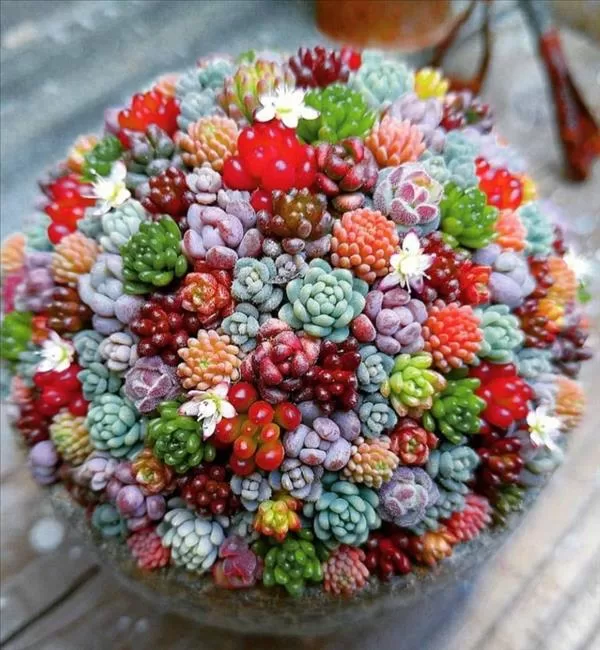How to care succulents
1. Provide the right amount of sunlight: Succulents thrive in bright, indirect sunlight. Place them near a sunny window or provide artificial grow lights if you don’t have enough natural light in your home.
2. Water sparingly: Succulents store water in their leaves and stems, so they don’t require frequent watering. Allow the soil to dry out completely between waterings and then water thoroughly but infrequently. Overwatering can lead to root rot, so it’s important to find the right balance.
3. Use well-draining soil: Succulents prefer soil that drains well. You can use a specialized succulent or cactus mix, or create your own by combining regular potting soil with perlite or coarse sand to increase drainage.
4. Avoid over-fertilizing: Succulents are not heavy feeders. Fertilize them sparingly, usually once or twice a year during the growing season, using a balanced liquid or slow-release fertilizer specifically formulated for succulents.
5. Watch for pests: Keep an eye out for common succulent pests like mealybugs, aphids, and spider mites. If you notice any signs of infestation, treat the affected plants with an appropriate insecticidal soap or neem oil solution.
6. Rotate the plants: Succulents tend to grow towards the light source, so rotating them every few weeks will help ensure even growth and prevent them from leaning or stretching towards one side.
7. Prune and propagate: Succulents can be propagated by taking stem or leaf cuttings. Pruning can help maintain the shape of the plant and remove any dead or diseased parts. Use clean, sharp tools to avoid damaging the plant.
8. Provide proper temperature and humidity: Most succulents prefer temperatures between 60-80°F (15-27°C). They can tolerate slightly cooler temperatures but may suffer damage if exposed to frost. Additionally, succulents generally prefer low humidity, so avoid placing them in excessively humid environments.
9. Avoid overcrowding: Give succulents enough space to grow and thrive. If they are placed too close together, it can lead to poor air circulation, increased humidity, and potential pest or disease issues.
10. Learn about specific succulent species: Different succulents have varying care requirements. Research the specific needs of your succulents to provide them with the best care possible. Some may prefer more shade, while others might require more sunlight or a specific type of soil.
Remember, caring for succulents is a learning process, and it’s essential to observe and adjust your care routine based on the specific needs of your plants.


